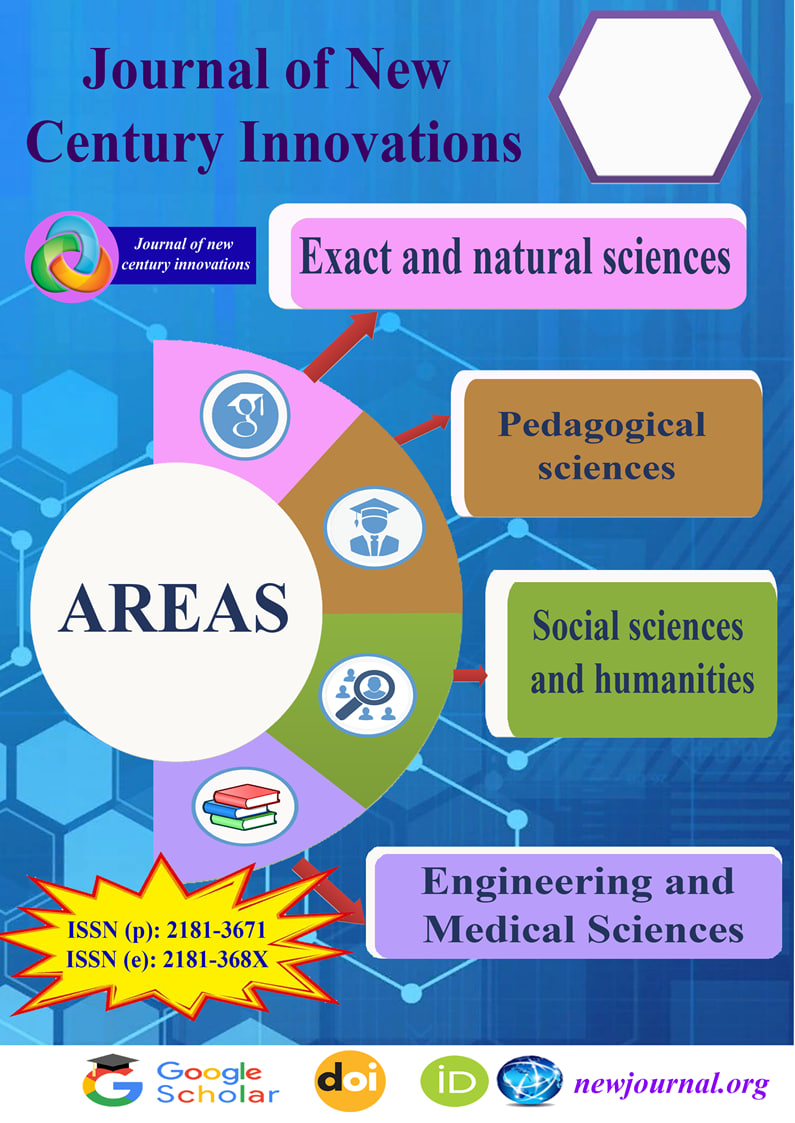NAVIGATION PROBLEMS OF UAV AND THEIR SOLUTIONS BASED ON ARTIFICIAL INTELLIGENCE
Keywords:
Keywords: Unmanned aerial vehicle (UAV), artificial intelligence (AI), Convolution Neural Network (CNN), deep neural network, optimization, navigation, information sharing.Abstract
Unmanned aerial vehicles (UAVs) are becoming more and more common in applications because of their ability to integrate a variety of sensors with cheap operating costs, easy deployment, and improved mobility. However, using unmanned aerial vehicles (UAVs) in complex environments at a distance limits their capabilities and reduces the system's overall efficacy. Consequently, a lot of researchers are concentrating on autonomous UAV navigation, which enables UAVs to move and perform certain tasks in accordance with their surroundings. Recent technological advancements have led to an increase in the applications of artificial intelligence (AI). A comprehensive analysis and classification of several AI methods for autonomous UAV navigation has been carried out. Two distinct AI approaches are model-based learning and mathematical optimization. This study reviews the fundamentals, principles and key features of several optimization and learning-based strategies. Moreover, an assemblage of unmanned aerial vehicles (UAVs) fitted with cameras records or observes particular areas. The UAVs can create a distributed network to process and share the sensory data they have acquired before sending it to a data processing center. Between them, extensive data flow may cause excessive latency and energy consumption. Artificial intelligence (AI) techniques are used in this research to process the video data that is being broadcast among the UAVs. Therefore, all that is required of each scattered UAV is communication of the relevant information with the others. Each UAV processes data using AI, and only information that is significant to the others is transmitted. Features are automatically retrieved from images using convolution neural network (CNN) technology, allowing UAVs to broadcast only the moving objects and not the full picture. The network thus consumes far less energy and transmits significantly less redundant data to any given UAV or to the network as a whole. The UAVs are also capable of energy conservation so they can continue to move in the sensing field.
References
Y. Lu, X. Zhucun, G.-S. Xia, and L. Zhang, ‘‘A survey on vision-based UAV navigation,’’ Geo-spatial Inf. Sci., vol. 21, no. 1, pp. 1–12, Jan. 2018.
A. Fotouhi, H. Qiang, M. Ding, M. Hassan, L. G. Giordano, A. Garcia-Rodriguez, and J. Yuan, ‘‘Survey on UAV cellular communications: Practical aspects, standardization advancements, regulation, and security challenges,’’ IEEE Commun. Surveys Tuts., vol. 21, no. 4, pp. 3417–3442, 4th Quart., 2019.
Google.com. (2021). [Online]. Available: https://www.google.com/intl/en- U.S./loon/
R. Zhai, Z. Zhou, W. Zhang, S. Sang, and P. Li, ‘‘Control and navigation system for a fixed-wing unmanned aerial vehicle,’’ AIP Adv., vol. 4, no. 3, Mar. 2014, Art. no. 031306.
S. Zhang, S. Wang, C. Li, G. Liu, and Q. Hao, ‘‘An integrated UAV navigation system based on geo-registered 3D point cloud,’’ in Proc. IEEE Int. Conf. Multisensor Fusion Integr. Intell. Syst. (MFI), Nov. 2017, pp. 650–655.
L. Dlwar, ‘‘Three-dimensional off-line path planning for unmanned aerial vehicle using modified particle swarm optimization,’’ International Journal of Aerospace and Mechanical Engineering, vol. 9, no. 8, pp. 1–5, Jan. 2015.
M. D. Phung, C. H. Quach, Q. Ha, and T. H. Dinh, ‘‘Enhanced discrete particle swarm optimization path planning for UAV vision- based surface inspection,’’ Autom. Construct., vol. 81, pp. 25–33, Sep. 2017. [Online]. Available: https://www.sciencedirect.com/science/ article/pii/S0926580517303825
C. Huang and J. Fei, ‘‘UAV path planning based on particle swarm optimization with global best path competition,’’ Int. J. Pattern Recognit. Artif. Intell., vol. 32, no. 6, Jun. 2018, Art. no. 1859008.
U. Cekmez, M. Ozsiginan, and O. K. Sahingoz, ‘‘Multi colony ant optimization for UAV path planning with obstacle avoidance,’’ in Proc. Int. Conf. Unmanned Aircr. Syst. (ICUAS), Jun. 2016, pp. 47–52.
Y. Guan, M. Gao, and Y. Bai, ‘‘Double-ant colony based UAV path planning algorithm,’’ in Proc. 11th Int. Conf. Mach. Learn. Comput., 2019, pp. 258–262, doi: 10.1145/3318299.3318376.
M. Bagherian and A. Alos, ‘‘3D UAV trajectory planning using evolutionary algorithms: A comparison study,’’ Aeronaut. J., vol. 119, no. 1220, pp. 1271–1285, Oct. 2015.
J. Tao, C. Zhong, L. Gao, and H. Deng, ‘‘A study on path planning of unmanned aerial vehicle based on improved genetic algorithm,’’ in Proc. 8th Int. Conf. Intell. Hum.-Mach. Syst. Cybern. (IHMSC), vol. 2, Aug. 2016, pp. 392–395

